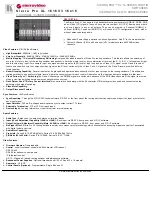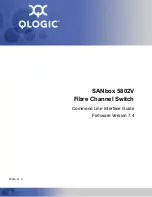
118
A
PPENDIX
D: A
DVANCED
IP R
OUTING
C
ONCEPTS
■
Supernet 3 requires 7 Class C address spaces. Since 7 isn't a power of
2, we have to round it up to eight. This gives it a netmask of
255.255.248.0.
■
Supernet 4 is a single Class C network, making it’s netmask
255.255.255.0
Now, assign ranges of addresses. Assume that the ISP is responsible for
the network 234.170.0.0 and that its first free addresses are at
234.170.158.0.
The third octet of Supernet 1 has to be an even multiple of 4, so the ISP
grants an address range starting at 234.170.160.0 and hopes that the
block between 158 and 160 can be filled in later.
Supernet 2 must also begin on an even multiple of 4. The first available
address after Supernet 1 conveniently fits the bill. So, supernet 2 extends
from 234.170.164.1 to 234.170.167.254.
Supernet 3 requires an even multiple of 8. It also can begin on the next
available address.
Since supernet 4 can fit entirely in a single Class C address space, it can
use the supernet 3 surplus space. It is therefore given the last Class C
address space in the Supernet 3 territory, effectively reducing supernet 3
to only the 7 class C networks it needs.
Summary of Contents for SUPERSTACK 3 3250
Page 8: ......
Page 20: ...20 CHAPTER 1 SWITCH FEATURES OVERVIEW...
Page 43: ...How STP Works 43 Figure 9 STP configurations...
Page 54: ...54 CHAPTER 6 USING TRAFFIC MANAGEMENT...
Page 66: ...66 CHAPTER 8 SETTING UP VIRTUAL LANS...
Page 70: ...70 CHAPTER 9 USING AUTOMATIC IP CONFIGURATION...
Page 98: ...98 CHAPTER 11 IP ROUTING...
Page 102: ...102 APPENDIX A CONFIGURATION RULES...
Page 106: ...106 APPENDIX B NETWORK CONFIGURATION EXAMPLES...
Page 132: ...132 INDEX...















































